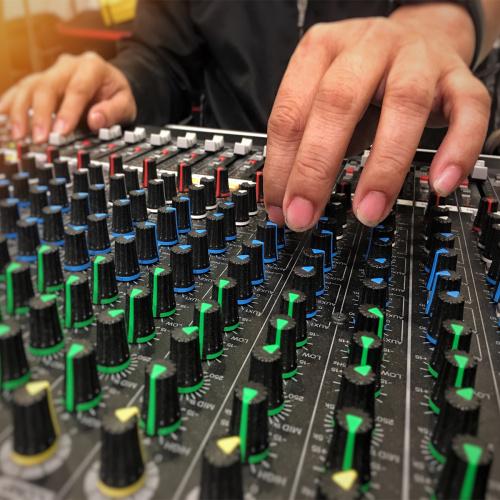Background
The Warehouse Recording Co is multi-use space in Harrogate that consists of multiple recording studios, a live recording space and a live venue that caters for national and international acts. These spaces are all located in close proximity, so required a high level of soundproofing to reduce sound transference both through flooring, and through walls.
Works were carried out prior to our project to raise the soundproofing in to which we were brought on to improve the floor’s acoustic performance of both Airborne and Impact.
The First Step
With some uncertainties in the floor’s make up and acoustic performance, we opted to use a 3rd party UKAS Accredited Acoustic Consultant to survey the acoustic performance, we also wanted the opportunity to site test a variety of new products as well as existing products in this ideal setting – this was only for their Impact reduction qualities. The client was happy to allow us to conduct the further product tests as we could then determine the best solution possible taking into account performance, cost and thickness.
Current Make Up
Although we are uncertain of the exact make up, we spoke to the client and the following is assumed;
- 22mm T&G Flooring
- 300mm Joist Depth
- Mix of 10kg per m3 and 45kg per m3
- 19mm and 15mm Acoustic Plasterboard to underside of joists
Initial Test
With our initial test. we aimed to have a complete picture of the current acoustic performance of the floor with both airborne and impact on the bare floor to begin with, this was carried out as such;
- <750 m3 in the source room
- 125m3 in the receiving room
Airborne tests were carried out first, this is so that the Reverb Time can be gathered to adjust for any corrections (results found in the next section)
Impact tests were then prepared and carried out with the following pattern;
- 4 positions were chalk-lined on the source room floor as each product is cut in to 1200mm x 600mm sizes
- 6 positions were carried out in the receiving room
- In each source room position we carried out a variety of solutions for future research and development in which there were 28
- Total measurements taken 672
Findings of Bare Floor
| Airborne Result DnT,w(C;Ctr) | Impact Results L’nt,w(Ci) |
| 59 (-2 ; -6) dB | 57 (0) dB |
| 53 dB | 57 dB |
When analysing the results, we found the airborne results to be higher than anticipated within the structure given the assumed make-up so we were looking to vastly improve the impact attenuation whilst looking for solutions that would increase airborne attenuation.
Remember, you are looking for a HIGHER number with airborne and LOWER number with impact – unless impact is quoted as a reduction value.
Looking at the Detail
In the process of the Research and Development side of testing the 28 different products, we had a library of products with tested Impact data to highlight the best solution that meets the criteria of performance, cost and thickness.
MuteMat® 2 and Tecsound SY70 were selected as the resulting solution as this provided the best result for impact reduction, this measured an overall improvement of 12db LnT,w 45dB in which there is a 5.6dB improvement at the lowest frequency of 100hz which is naturally much harder to attenuate due to it’s ability to travel further within the structure.
Installation
The client’s team had installed the solution given, following instructions given as well as assistance from our installation video
Findings of Final Testing
Once materials had been installed, we wanted to complete the project with a final test to monitor the overall acoustic improvement and correlate results from our initial testing.
These were carried out under the same conditions as last time with the placements being as close as possible to previous testing with the same receiving room.
| Airborne Result DnT,w(C;Ctr) | Impact Results L’nt,w(Ci) |
| 65 (-2 ; -7) dB | 44 (3) dB |
| 58 dB | 44 (3) dB |
Looking at the Detail II
With the results above, we can see improvements in both Airborne and Impact with an additional 1dB of the solution installed over the sample size – which gives us a strong, positive indication of our Research and Development samples and their results as this achieved 45dB.
The airborne result shows a stunning improvement given it’s relative mass and current performance, this is also most prominent in the lower frequency bands 125hz – 250hz (6.92dB average) which is important in recording studio spaces given low frequencies have the tendency to travel further within the structure.


